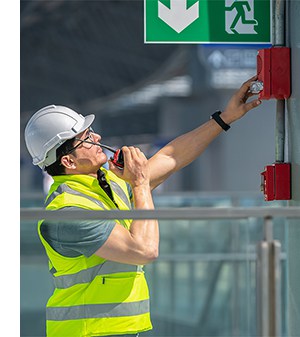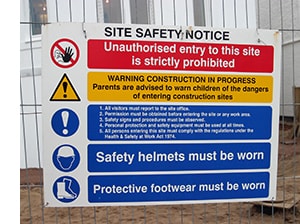
What are safety signs in the workplace used for?
Signs are essential to workplace health and safety. In moments of tension, such as emergencies, it can be hard to immediately recall instructions and protocol. Signs provide a clear reminder of how to act in order to stay safe.
Effective signs help workplaces to comply with The Health and Safety (Safety Signs and Signals) Regulations 1996, as well as The Regulatory Reform (Fire Safety) Order 2005 in England and Wales and the Fire (Scotland) Act 2005 in Scotland.
Guidance on workplace safety signs
There are clear guidelines set out by The Health and Safety (Safety Signs and Signals) Regulations 1996 for the safe and effective use of safety signs.
Employers are responsible for ensuring that signs are in place to reduce risk where that risk cannot be removed or controlled by other methods. The guidance is very clear that signs are not a substitute for other methods; if it is possible to reduce or control risk in another way, employers should do this.
10 ways to use workplace safety signs effectively:
- Use the risk assessment to identify areas where signage can reduce risk to employees.
- Speak to your employees about signs – they may seem obvious to you but less-experienced workers may need to be informed of their meanings and the risks of not following them.
- Consider if additional signals may be required to support signs, such as acoustic signals or verbal instructions.
- Check that any PPE does not impair employees’ vision of the signs
- Adhere to the designs provided in the Regulations
- Ensure signs are durable: weather-proof, shock-proof and securely fastened.
- Consider size and illumination to ensure signs are clear and visible from the intended viewing distance.
- Think carefully about how to position signs for clarity. For example, if signs identify equipment, ensure they point towards it. Equally, consider if signs could appear contradictory, for example, a fire equipment sign pointing in the opposite direction to a fire escape route could confuse people in an emergency.
- Only use signs where they can reduce risk and avoid having too many signs close together, as this could lead to confusion and could make the signs less noticeable.
- Remove signs as soon as they become unnecessary – if there has been a change in circumstances, which has reduced risk, for example. This will avoid confusion or misinformation.
Sign Designs
What colour sign should a first aid kit have? Are all warning signs red? Do fire escapes have to use the same pictogram?
In the UK, there are 5 common types of signboards that must have specific features as prescribed by regulations. Signboards are described by the HSE as providing “information or instructions by a combination of shape, colour and a symbol or pictogram”. Workplaces must adhere to the features of different types of signs listed in The Health and Safety (Safety Signs and Signals) Regulations 1996 in the following ways:
-
The sign must have the correct percentage of colour
-
The sign must be the shape described
-
The sign should use pictograms or symbols from the Regulations. Where there is not a suitable pictogram, you can design your own. However, it must be simple and only contain the necessary information
-
If supplementary text is used, the language must be appropriate to the sign. For example, mandatory signs would need to use the word “must” in their instructions, as opposed to “may” or “should”.
What are the 5 types of safety signs?
Prohibition signs
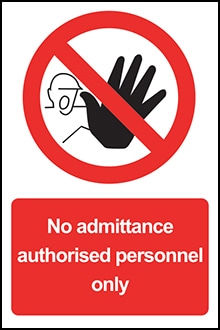
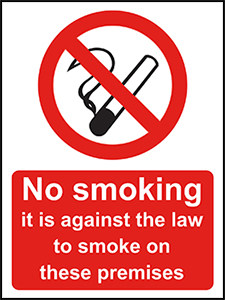
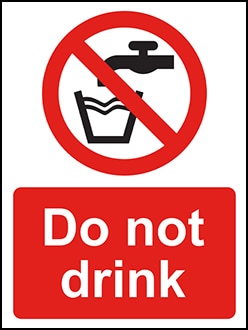
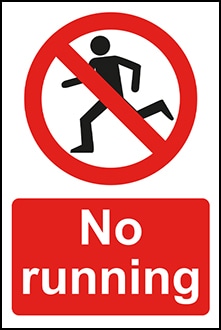
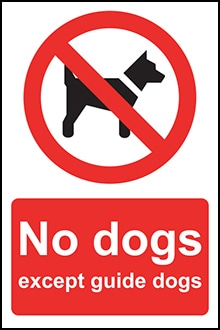
This type of sign prohibits behaviour that is likely to cause or increase danger. It might inform viewers of dangerous behaviour or emergency cut-our devices, or it could instruct readers to stop.
Colour: red
Shape: round
Design: black pictogram on white background, red edging and diagonal line, with the red parts taking up at least 35% of the sign.
Warning signs
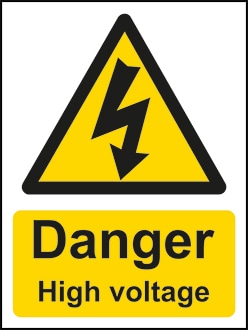
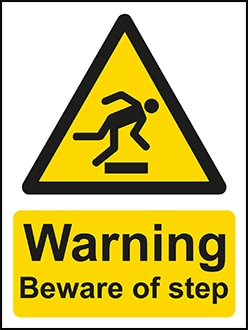
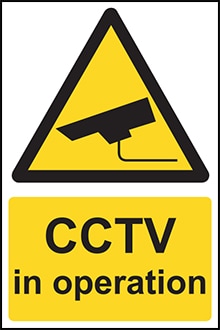
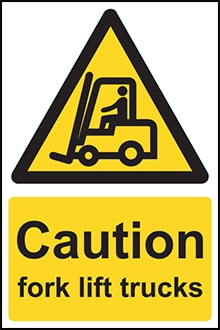
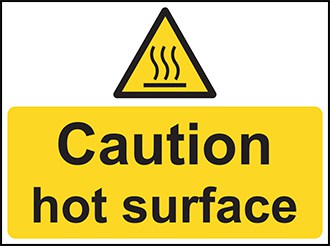
This type of sign warns of a hazard or danger. It might instruct viewers to be careful, take precautions or examine.
Colour: yellow
Shape: triangular
Design: black pictogram on yellow background, and black edging, with the yellow parts taking up at least 50% of the sign.
Mandatory signs
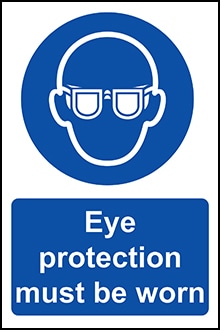
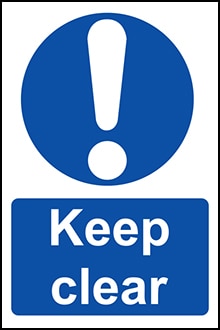
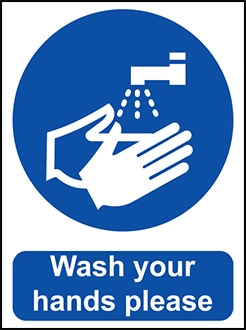
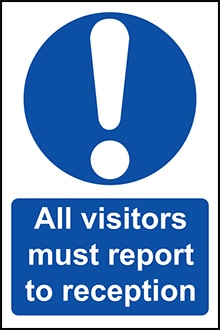
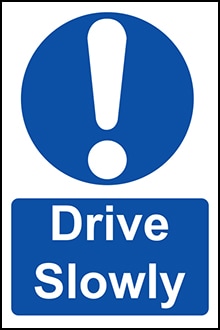
This type of sign prescribes specific behaviour or action.
Colour: blue
Shape: round
Design: white pictogram on blue background, with the blue parts taking up at least 50% of the sign.
Emergency escape or first aid signs
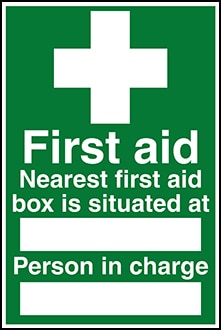
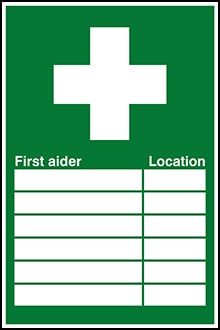
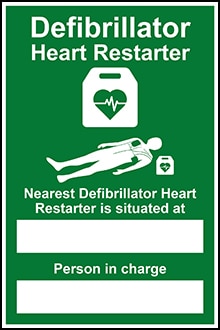
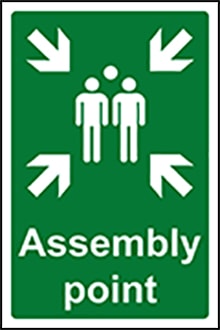
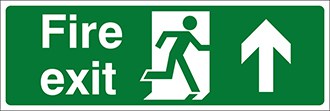
This type of sign provides information on emergency exits, first aid or rescue facilities.
Colour: green
Shape: square or rectangular
Design: white pictogram on green background, with the green parts taking up at least 50% of the sign.
Fire-fighting signs
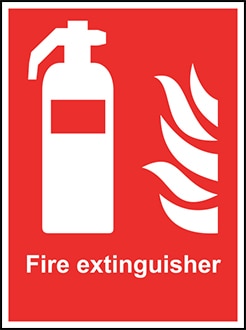
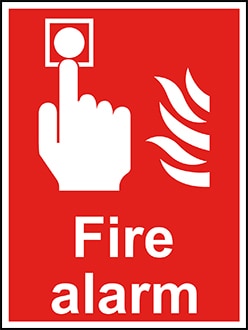
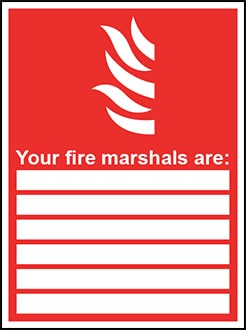
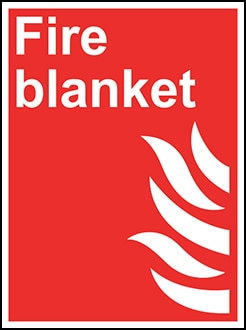
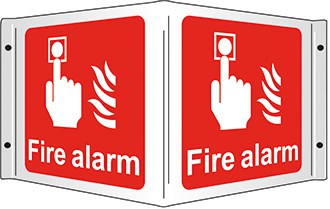
This type of sign provides information on the location of fire-fighting equipment, such as a fire hose, fire extinguisher or emergency fire telephone.
Colour: red
Shape: square or rectangular
Design: white pictogram on red background, with the red parts taking up at least 50% of the sign.
Fire safety signs in buildings or structures:
- Alternative exits should be clearly identified to ensure people are aware of all options in an emergency
- The fire exit sign should be immediately above the exit, not obstructed and in a place that is least likely to be obscured by smoke
- Directional arrows should support along escape routes where the exit is not visible or clear
- Additional signage may be required to keep fire exits safe, e.g. “Fire escape – keep clear” signs (check with enforcing authority for fire safety)
- In areas of poor natural lighting, additional illumination will be required
- In buildings with multiple occupants, occupiers are responsible for their part of the building but must also ensure that adequate signage is in communal areas – this is usually provided by the owner of the building
Safety labels and markings in the workplace
Chemical labelling and packaging
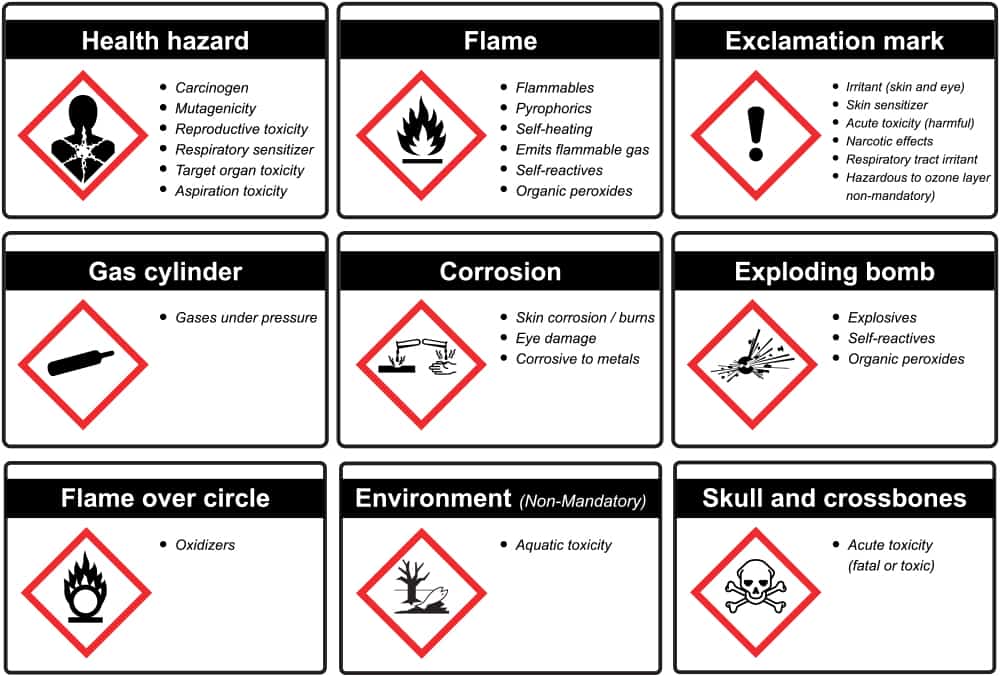
This type of sign provides information on a vessel containing hazardous chemical substances or mixtures. It must be affixed to the outside of any containers, tanks and vessels containing such substances, as well as any pipes that carry these substances. It is advised that these labels or signs are affixed in places where employees are most likely to come into contact with the hazardous substance, such as at drain valves or filling points. If rooms, areas or enclosures contain large quantities of hazardous substances, a suitable warning sign should be affixed in a way that makes it visible from outside of the area.
These signs do not appear in The Health and Safety (Safety Signs and Signals) Regulations 1996, but instead in Annex V to the CLP Regulation. They can be found on the HSE’s chemical classification page and, importantly, workplaces are not allowed to create new versions of these signs. However, employers may:
- replace these labels with appropriate signs from Part II of Schedule 1 of the Regulations. If there is no suitable equivalent, the relevant hazard pictogram from Annex V must be used;
- supplement the label with additional information, such as the hazardous chemical and the risk involved.
Obstacles and dangerous locations:
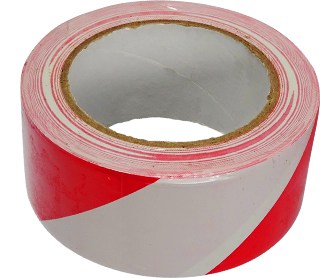
Employers may need to highlight obstacles or dangerous locations, such as the edge of a raised platform or an area where objects may fall. If so, they should use either red and white or yellow and black striped tape with the following stipulations:
-
The stripes must be at an angle of 45 degrees
-
The stripes must be, more or less, of equal size.
Is a first aid sign mandatory?
It is likely that most places will need a first aid sign, although it is not necessarily mandatory in the UK. The HSE states that, as a minimum, workplaces must have a suitably stocked first aid kit, an appointed person and information for all employees giving details of first aid arrangements. It is for this final point that a first aid sign could be beneficial, ensuring first aid equipment is identifiable and accessible in an emergency.
However, specific requirements will depend on a workplace’s first aid needs assessment. In larger workplaces, for example, multiple first aid kits may be required and, therefore, signs identifying the way to the closest would support the speedy provision of first aid.
Why are health and safety posters important?
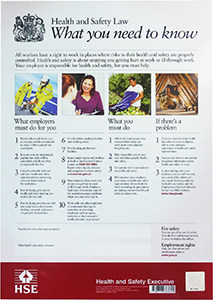
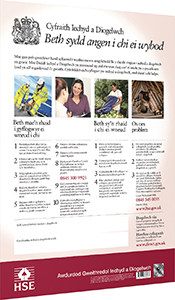
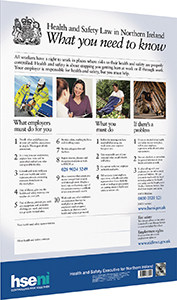
Health and safety posters serve many functions: information, instruction, clarification and reminders.
By law, employers must either display the HSE-approved law poster or provide employees with the equivalent leaflet. The poster provides health and safety information in an accessible style to encourage employees to read and understand the content. If the poster is displayed, it must be in a prominent location on all business sites in an area that is accessed by employees. Multiple posters may be required to achieve this.
First aid poster requirements
Other than the HSE-approved law poster, the requirement to provide first aid, health and safety posters is dependent on a workplace’s risk assessment. In a warehouse, for example, the risk assessment may identify a high risk of eye contamination from packaging dust. Although steps will be taken to reduce this risk, providing a First Aid for Eyes poster next to the eye wash kit ensures that employees will take the correct action.
In workplaces where there is no qualified first aider (under 25 employees in a low-risk environment or under 5 employees in a high-risk environment), providing posters to support the appointed person is crucial. Posters can provide even qualified first aiders with the peace of mind and presence to give effective first aid in an emergency and so should not be overlooked by any workplace. Placing an AED Defibrillation and CPR poster next to an AED can encourage responders to provide first aid even if they lack confidence and can ultimately save lives.
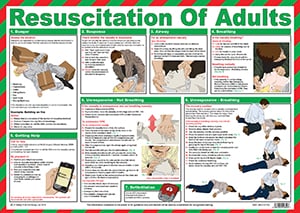
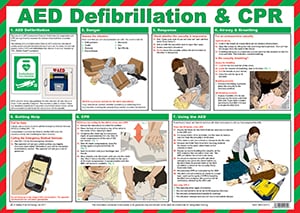
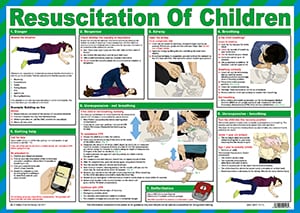
In addition to first aid posters, health and safety posters can provide useful reminders to employees of how to look after themselves. Posters such as Health and Safety for Computer Operators, Stress Management or Safe Manual Handling can help employees to feel supported and remind them of important health and safety practices.
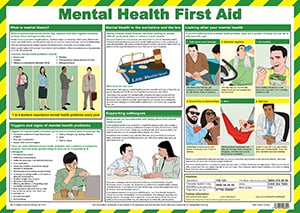
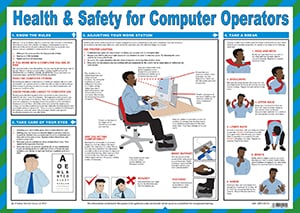
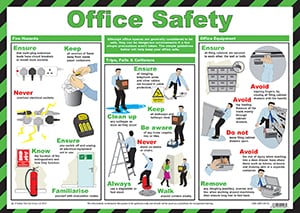
As with signage, it is important not to flood workplaces with posters, as they can become ineffective and overwhelming. Completing a detailed risk assessment will support in identifying the most important posters for your workplace’s needs.
Equally, putting a poster up is not an adequate safety measure on its own. Of course, you will have done all that you can to limit risks but, in addition to this, employees should be spoken to about the risks of the workplace. First aid, health and safety signs and posters should be identified and spoken about, with any uncertainties being cleared up in advance. This kind of discussion can also provide a useful opportunity for employees to give feedback and contribute to improving health and safety at work.
Make sure you understand exactly what your workplace needs and that you have the necessary first aid kits and equipment to provide effective first aid in your workplace.
Read our blog for more information on first aid, or contact us for further advice and information on our products.


